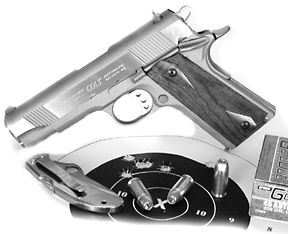
We recently queried a number of custom gunsmiths to learn what they recommend as a reliable, easy to pack, powerful carry gun. A popular answer was an Officer’s frame with a Commander length slide, a combination which marries a longer slide (to make the pistol more reliable) with a shorter grip frame (to make it easier to conceal). Perhaps it was this reasoning that prompted Springfield Armory to introduce its new Compact pistol, which for all intents and purposes has replaced the Champion Lightweight (a true Commander-sized pistol).
Springfield’s latest evolution of the 1911 pistol retails for $782, a price range which formerly was reserved for expensive imports like SIGs. Today, however, we see a lot of $750 to $950 MSRPs on superior production pistols, moreso, it seems, on concealable, lightweight 1911s.
In fact, it didn’t take too much effort to find other products to match the Springfield Compact against, but we settled on two new lightweight 1911s with 4-inch barrels, commonly referred to as Commander length pistols. Colt’s Manufacturing sells its $950 Commander with upgrades such as wood grips and adjustable trigger. These and other niceties are now so common anything less is typically marketed as GI-grade. Kimber’s Pro Carry II, $845, has even more (formerly) custom features, and it is distinguished by an internal safety system that has not been used in a long time. The Schwartz system is a firing-pin block controlled by the grip safety. It is particularly notable because Kimber is betting the farm on this design, re-introducing all its Type-II models with the Schwartz system installed. But how well does it work? We found out.
Range Session
Before firing the guns, we locked back the slide of each pistol and applied Breakfree CLP oil to the exposed barrel and guide rod, rails and plunger (see Colt and Kimber) and let the slide forward. We then used Breakfree liberally at the sides of the hammer and atop the barrel hood. We commenced our break-in with Winchester’s 230- and 185-grain jacketed ammunition, firing standing unsupported at a variety of distances. We had acquired the Kimber and the Colt’s pistols first, and each one fired a minimum of 150 rounds in this session without fail. The Springfield arrived much closer to deadline, and we pressed it into the benchrest session with barely a few clips under its belt. After the benchrest session, we stripped, inspected, cleaned, and lubricated each pistol.
From the bench we used sandbags and placed our targets 25 yards downrange holding at 6 o’clock on a 5.5-inch bull. Five five-shot groups were measured center to center and recorded. An Oehler 35P Chronograph was used to compute velocity and related calculations.
Last, we fired extensively at a Bianchi plate rack (six 8-inch plates at a distance of 10 yards). In the end, we ran about the same amount of rounds (250 to 300) through each gun. Here’s what we liked and didn’t like about each gun:
Springfield Armory Compact PX9503L, $782
In planning this evaluation we originally slated Springfield’s Champion, a pistol which is a true Commander-sized 1911 in both slide and frame dimensions. By the time we got around to performing the actual test, we learned that the Champion model (number PX9242L) was being phased out in favor of the Compact, which differs by having a shorter length of the grip for better concealment. This is not to be confused with another upcoming model, the Micro Compact (PX9801L), which is a thoroughly upgraded lightweight pistol about 10 percent shorter than Springfield Armory’s Ultra Compact series.
The PX9503L replaces all other Commander-length lightweight pistols in the Springfield Armory catalog. They have a shorter grip frame, resulting in one fewer round. (Two six-round magazines are supplied.) It was a very handsome pistol, sporting a black Parkerized finish. Contrasts were supplied by the aluminum trigger and fully checkered wood grips. Other features included a skeletonized hammer, lined mainspring housing, and an Ed Brown Memory Groove grip safety. This pistol is also the only one we tested with a fully supported chamber and ramped barrel, a relief in the barrel hood that serves as a loaded-chamber indicator, and a key-operated internal locking system that freezes the mainspring with the hammer in the down position. This also effectively locks the slide. The sights are Novak design with Trijicon brand tritium night sights. Also, Springfield has gone to the trouble of dovetailing and pinning the front sight in place. The Springfield Armory Compact is the least expensive pistol in our trio, arguably the best looking, and its sight package alone is worth at least $150. We would have to say this model represents the best value of the three.
The issue of reduced capacity can be handled using extra-capacity magazines. There are number of seven- and even eight-shot magazines available aftermarket specifically for the shorter Officer’s model frame. We tested four different extra-capacity magazines from Wilson Combat, (800) 955-4856, and the Compact worked with all of them. We also tested the Metalform seven-round magazine for the Officer’s model as well (available from Brownells, (641) 623-4000. It worked flawlessly, but we didn’t like the way it blended visually with the Compact’s frame. Instead, we liked the seven-round Wilson Combat model number 47OX, ($27.95). It looks the most natural in place and has a removable basepad for cleaning and replacing the spring when necessary.
We were impressed with the Springfield Armory Compact because it was the only pistol of the three that fired every round without malfunction. Plus, it achieved this record of reliability with aftermarket, extra-capacity magazines that old guard shooters tend to mistrust.
All three guns field-strip differently. For the Compact, no tools or pins are needed for disassembly. The shooter pulls the slide back to align the link pin, pushes it out to the left, and slides the entire top end off the frame. Then he pushes the half-length guide rod to compress the recoil spring enough to free it from the feet of the barrel.
After removing the guide rod and spring, the barrel is free to unlock and be removed from the slide. This same system is used on the Ultra Compact series. In our long-term test of the V10 we purchased in December 1999, (see GT February 2000) we have found this design is hard on the life of the recoil spring over an extended period. Each time we removed or installed the top end, there is always the risk of chinking the recoil spring. A sloppy disassembly of the gun is more of a threat to the life of the spring than is hard use, in our view.
On the accuracy chart ,the Compact finished last, albeit with an average of 3.0 inches for all groups fired. While the Springfield averaged 2.5 inches or less firing the 230-grain FMJ rounds, we suffered a wider variation when it came to the lighter, faster cartridges. We credit this to a basic characteristic of the gun.
Despite being only marginally lighter than either the Kimber or the Colt, with less sight radius to match, the Compact felt substantially lighter when firing. This challenges the shooter’s ability to maintain a consistent grip. A lighter grip will cause the gun to print higher, a heavier grip lower. Traditional wisdom regarding shorter pistols has always been that higher slide velocity (i.e. hotter rounds with lighter bullet weights) will ensure greater reliability. We did not find this to be true on these pistols, and if the heavier, slower moving 230-grain bullet proves more consistent, we’d choose it for this pistol exclusively.
Colt’s Lightweight Commander Model 04860XSE, $950
The Colt’s features a 4.25-inch barrel in a stainless-steel slide with cocking serrations fore and aft. The ejection port has been lowered and flared, but it has also been relieved on the forward right hand side so much that a portion of the barrel ahead of the chamber hood is visible. This is unusual.
The sides of the slide are flat and coated with shiny nickel, but the top of the slide is matte to reduce glare.
Upgrades from standard models include an aluminum adjustable trigger, skeletonized hammer, and custom wood grips with checkering and Allen head screws. The frame is alloy with a dull matte finish. This model was the largest pistol in our test, but it is also the only one with the front strap undercut at the trigger guard to lower the boreline in the shooter’s hand. The cost of this gun is high in our estimation, considering the sights are nothing special. They seem to be three-dot sights like those found on the basic 1991A1 Government model we tested in July 2000. The rear blade is drift adjustable for windage only. The front sight is pinned in place, but with a sloppy job of soldering underneath.
Compared to the $610 1991A1 we previously tested, this gun, shooting similar ammunition such as the 230-grain FMJ round, significantly bettered the older Government model by almost an inch and a half. Obviously, some of the extra cost results from handfitting the alloy frame and steel slide. Also, this lightweight Commander runs on a full-length guide rod. Likewise, in this test the Colt was the accuracy champ with Winchester’s 185-grain FMJ rounds. In fact, the Colt’s performance was tops overall with a smallest five-shot group of 1.4 inches and an average group size of only 1.7 inches. Speer 200-grain Gold Dot Hollowpoints and the 230-grain FMJ rounds produced average groups of 2.5 and 2.4 inches respectively. Actually, we were satisfied with the accuracy of all the pistols in this test, but it was obvious to our staff that the Colt required the least amount of work to shoot well.
Each of our test pistols were supplied with flush-fitting magazines, but this Colt model one-upped the others with a capacity of 8+1, thanks to the follower that compresses when the eighth round is loaded. However, only one mag was supplied with the Colt, whereas the other pistols came with two.
Another area in which the Colt came in first was maintenance. Though the Springfield required no tools for field stripping, the Kimber required a retaining pin and the Colt a bushing wrench. But even with a full-length guide rod to deal with, disassembling the Commander was simple and did not require a fresh jar of elbow grease or new manicure afterward. Actually, all we needed to take the Colt apart was a way to depress the retainer underneath the muzzle. Once pushed inward, the bushing moves easily aside (clockwise) and the cap and spring may be removed. All that remains is to align the slide with the relief for removing the link pin and the top end slides off. Rotating the bushing counter-clockwise to about 4 o’clock releases the bushing and the guide rod. The barrel may then be removed.
The barrel is not ramped. In fact, there is nothing fancy about the design of this pistol. With the exception of the full-length guide rod, this is standard 1911 design well executed. Thus, in terms of reliability, we only suffered malfunctions when the pistol needed cleaning and lubrication. Also, we did think the trigger could be smoothed a bit more, but we didn’t feel inordinately hampered by the connection of the trigger to the firing-pin blocking mechanism. This has been a source of complaint in the past for those seeking a really crisp trigger break.
Kimber STS Pro Carry II KR16555, $845
Though not as loaded as the Springfield, the STS Pro Carry II offers a two-tone matte finish and a snag-resistant contoured rear sight lined to reduce glare. We do not prefer rubber grips, but the supplied panels are not soft or grabby, two characteristics that can hinder effective presentation and interfere with control. The mainspring housing on the rear of the grip is checkered, the hammer relieved, and the trigger adjustable for overtravel. There’s a full-length guide rod, and lockup is achieved at the muzzle end without a bushing.
Early in our shooting, the Kimber displayed a disturbing characteristic—the activation of the grip safety was crucial in the gun’s operation, but well beyond just making the gun go bang.
This was apparent when we examined the amount of travel of the Kimber’s safety from rest to fully closed. We measured this “length of compression” on each pistol using a jig and a caliper, learning the Colt grip safety had an overall movement of 0.1 inch, but a compression of just 0.05 inch was all that was needed to deactivate the safety and release the hammer. The grip safety of the Springfield had a total movement of compression of 0.14 inch, and the hammer was not released until it had traveled 0.13 inch (nearly closed). The distance traveled overall by the Kimber grip safety measured 0.13 inch, but the trigger would release after the grip safety had been closed only 0.08 inch. The trouble with the Kimber was that the weight of the trigger varied with how much the grip safety was compressed. At the point of trigger release (0.08 inch), the trigger pull measured 5.5 pounds. But when we closed the grip safety completely and held on tight, we were rewarded with a 4.0-pound trigger, the lightest in the test. (We did find a variation in the Colt’s trigger pull of one-quarter pound; the Springfield didn’t vary.)
We think this variation in trigger pull weight is due to the Schwartz system. The firing pin is only allowed to move when the grip safety is compressed. Inside the slide is a yoke that captures the firing pin at rest. This yoke is raised when the grip safety is compressed, freeing the firing pin. With the top end off, it is easy to see the direct action of the push rod next to the disconnector atop the rear of the frame.
Press the grip safety and it moves up. Release it and it falls via gravity back into the frame. The Schwartz system has been around for a long time, but has it not been used extensively mainly because of cost. But in our experience, there were other complications.
By the end of our test we were experiencing failures to return to battery with the Pro Carry II. Even without the gun loaded we could produce a situation wherein the slide would fail to close by approximately one-eighth inch. This was not a matter of lubrication or recoil spring rate, in our opinion. Without touching the grip safety, we could work the slide freely to the rear and close it completely. With the grip safety held down tightly, the slide would also close, but most often with noticeable difficulty. But virtually any change in pressure at the grip safety, even if it were compressed enough to allow the hammer to fall, would result in a failure to return to battery. Certainly a change in grip pressure is likely to happen during recoil, which is what we theorize was the cause of the malfunctions we experienced. We inspected the rod that contacts the plunger to release the firing pin and also inspected the plunger. We cannot comment on the efficiency of the push rod and how it operates, but we can make these observations about the plunger.
The plunger is angled, or ramped, to allow the push rod to slide into position. The leading edge appeared to be slightly burred, so this could have caused interference. Or perhaps the angle of the mating surface needs to be changed. Compared to the plunger in the Colt pistol, the spring load on the Kimber’s plunger is extremely hard. Possibly a lighter detent is called for on the plunger. Either way, we wouldn’t want to carry a pistol that demands an absolutely perfect grip for operation. Accuracy from the STS Pro Carry II was very nearly on par with the Colt. We managed to shoot groups of less than 2.5 inches with each different cartridge. Overall averages were 2.3 inches for the Kimber and 2.2 inches for the Colt, largely on the basis of the Colt’s performance with the 185-grain rounds. The accuracy data collected for the Kimber was taken with the grip safety taped shut so we could take advantage of its best available trigger.
We also noticed that shooters with meatier hands liked the Kimber more than those with flatter or bonier hands. In fact the thinner palmed group complained of discomfort inside the thumb of the strong hand.
For disassembly, removing the top end requires you to pull back the slide and align the link pin with the notch in the slide. As is standard, the pin exits to the left and the top end, including barrel, guide rod, and recoil spring, slide forward off the frame as a unit. To remove the barrel, one must push the guide rod forward, compressing the recoil spring far enough to expose a small hole in the rod. Here is inserted a piece of wire to capture the spring (not supplied). All that is needed is a piece of paper clip bent to a right angle. With this done, the guide rod is removed to the rear and the barrel is free to unlock and exit through the front of the slide.
Gun Tests Recommends
Colt Lightweight Commander 04860XSE, $950. Our Pick. At this price we think this pistol should come with better sights, but the Colt delivers what the Commander was designed to offer; that is, the advantages of a full-size 1911 without the full-size weight and profile.
Springfield Armory Compact PX9503L, $782. Buy It. We’re not afraid of choosing to shoot one fewer round or using extra-capacity magazines. This is a good value, and it shoots well with carefully chosen ammunition.
Kimber STS Pro Carry II KR16555, $845. Don’t Buy. While Kimber is in the process of changing its entire line to Type II Schwartz system pistols, we are not convinced of the total reliability of this design. We feel the Type I series was more consistent.


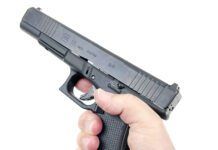
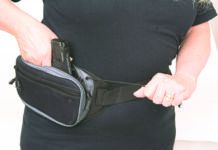





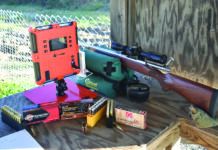

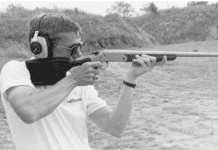




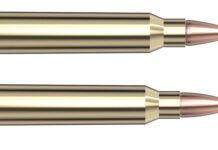

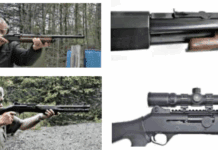
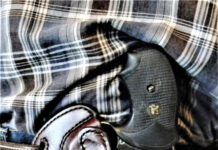

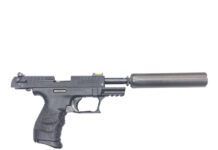


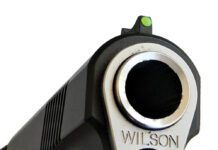


Thanks for the comments on Colt’s 45ACP. I never doubted the old iron horse.